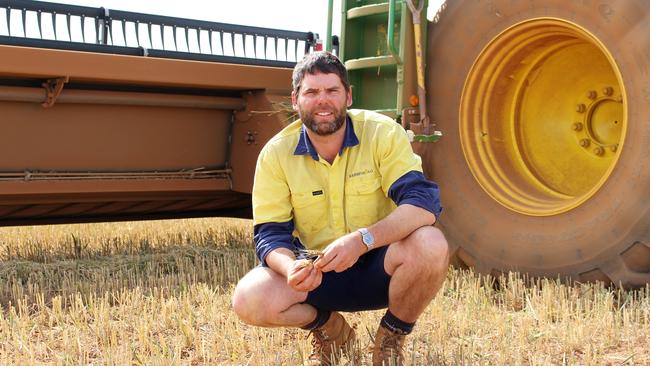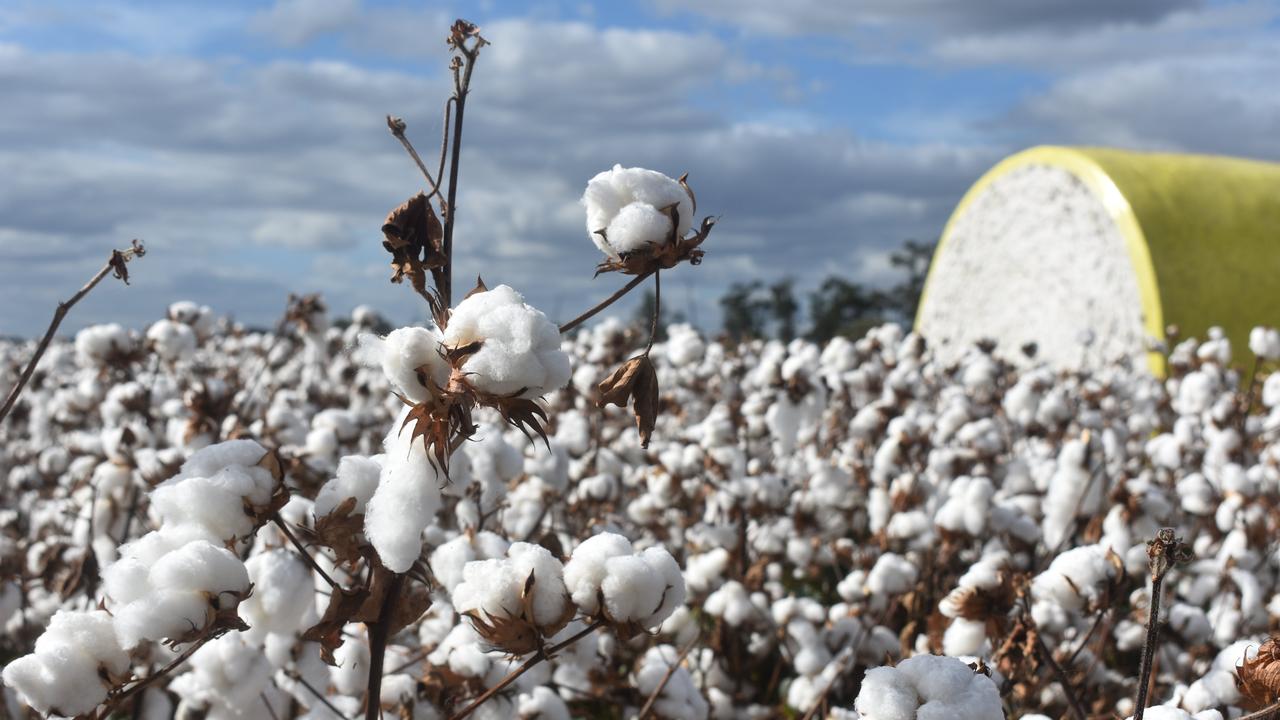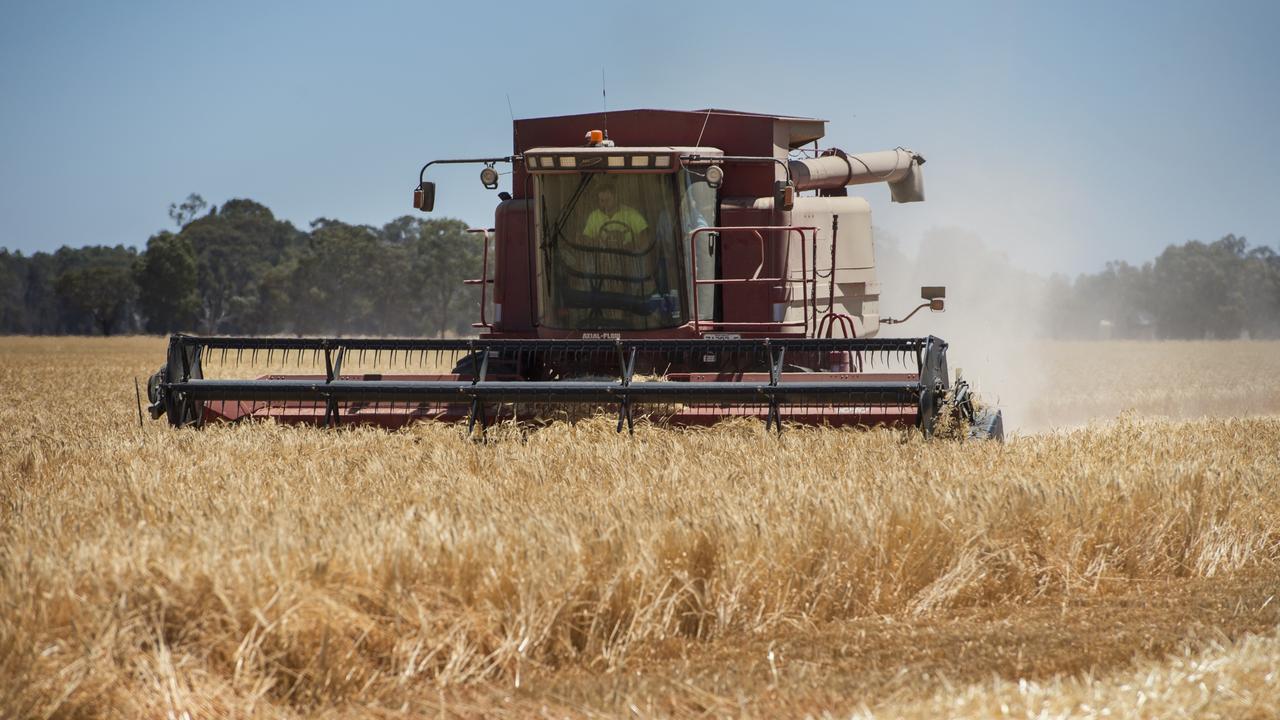Baldock family maximises minimum rainfall
A switch to minimum till has brought maximum benefits in arid South Australia.

FARMING low-rainfall country in South Australia is a balancing act for the Baldock family.
At the start of each season, they must be poised in case the winter delivers good rain to maximise yields.
Yet with an average 300mm rainfall, and many years where this is not achieved, it is also important not to overspend.
It’s the ability to make the most of rain that does fall yet dial back inputs if the season cuts out that is a key to success, according to Tristan Baldock.
Tristan, together with his wife Lisa and parents Graeme and Heather, farm about 6000ha at Buckleboo on the Eyre Peninsula, country that in the past four years has delivered below average rainfall.
Yet the family is still harvesting a crop this spring thanks to a dramatic change in the way they manage their cropping program.
“About 25 years ago, if we’d had the rainfall we have had the past few years, we wouldn’t have had a crop at all this year,” Tristan said.
“It’s a reflection on the changes we have made that mean we do get some kind of crop every year – it’s just the size of it that is dependent on how much rain we get.”
After a terrible year in 1996, Graeme and Heather toured Western Australia to see how those farmers coped with low and unreliable rainfall.
“We’ve been lucky that Mum and Dad have always been innovative and early adopters of change,” Tristan said.
“After that trip, Mum and Dad came back and our whole farming system changed to no till or minimum till.”
Since that time, there has been minimal cultivation of the soil.
The crops never produced a lot of stubble anyway so the switch to direct drilling was not a problem and sowing in between rows allowed any stubble to remain and continue to protect the soil.
WORM TURNS
WHILE organic soil carbon levels were not taken when they changed their cropping regimen, Tristan is sure that those levels have lifted.
“In retrospect, we should have taken levels at specific locations at the start of the changeover, but we are seeing evidence of the impacts of improving our organic carbon,” he said.
“We have more worms, we have more termites, the soil is more friable, it takes less horsepower to pull the tyne through the paddock and rainfall infiltrates with no run-off.
“We don’t need soil organic carbon measurements to know we have made a difference.”
Along with the minimum till/zero till process came the need for better weed control.
Tristan said it was essential to bank moisture that fell at any time, even if the timing wasn’t perfect.
The case in point was this year.
With a good start, the family looked forward to a good season before the rain cut off during winter and then arrived in late September and October.
It caused the export hay crop, which was on the ground ready to be baled, to rot and it was too late for this season’s grain crops, but he always saw the bigger picture.
“That 100mm of October rain is moisture we need to retain in the soil profile,” he said.
“The boom spray is going in the mornings here and the headers are going in the afternoons.”
The family is heavily involved in a local research group, which a few years ago spent $80,000 in partnership with local growers on installing moisture probes and weather stations across the district.
And it was a 40mm downpour two years ago that reinforced the importance of weed control year-round in a timely manner.
“We all had a 40mm rain and one farmer was two weeks later than the ideal conditions spraying a particular paddock,” Tristan said.
“Having moisture probes showed us that all that rain event was used up by summer weeds in just two weeks in the paddock where weeds were not controlled in a timely manner.”
SUNNY OUTLOOK
DESPITE the constant juggle of maximising soil moisture with low average rainfall, the Baldocks approach every season with optimism.
Wheat is king, with barley and oats for export hay production rounding out the cereal program. Canola is also grown while pulses like lentils and field peas have been included in the rotation.
Those pulses that are sown as a break crop come at a cost – over a 10-year period they do cover the cost of production, but there are many years where they don’t break even.
Tristan includes them in the rotation to act as a break crop to try to control barley grass, but even stretching the break crop to two years is not now working as effectively in keeping the weed numbers low.
“We could control barley grass with some of the expensive chemistry, but we are looking at $50/hectare to use on crops that may not achieve acceptable yields,” he said.
Herein lies the balancing act again. While the pulse crops might not be financial winners, they are putting nitrogen back into the soil, help to reduce barley grass populations and potentially can be an income stream if rain does come.
Whatever decisions are made on their farming country though are ones that will protect and improve their biggest asset – their soils.
In what Tristan said was perhaps one of the hardest decisions made in recent times, Graeme and Heather took livestock out of the farming mix in 2009 after three tough years at the end of the millennium drought.
“We saw the country had no ground cover, we were concerned about erosion and compaction of the soil from the hoofs and the disturbance of the soil from grazing,” he said.
“That decision has had a financial impact in what is considered a marginal mixed farming environment, especially given the high stock and wool prices in the past few years, but we do not regret it.
“We do have neighbours’ sheep on agistment on winter pastures and over summer on stubbles, but we can take them off when we feel that any more grazing would deplete ground cover too much.”
DIGGING DEEPER
THIS spring, the Baldocks are harvesting 5500ha of crop despite just 145mm of growing season rainfall.
The wheat is expected to yield 1.5-1.6 tonnes/ha, the lentils 400kg/ha, the canola 500kg/ha and the oaten hay was expected to yield two tonnes/ha before it was spoiled by rain.
“The beauty of low rainfall farming is in years where it rains at the right times, the yields could easily double,” Tristan said.
“But in every year, we are getting some kind of yield and that just wouldn’t have happened 25 years ago.”
Their next step is to incorporate more of the results from research carried out on their property with soil amelioration.
Last year, the family combined deep ripping and liquid nitrogen on their paddocks for the first time, and Tristan said rooting depth was greater, as was crop growth even when the conditions were dry.
Deep ripping opens up the soils up for plant growth, and the addition of liquid nitrogen at depth (40cm) meant the crops’ roots grew into a source of nitrogen.
His goal is to further improve water use efficiency and make the farm’s soils more friable.
MORE
THE TOP 10 AGRICULTURE TRENDS OF THE NEXT DECADE
THE FARMERS LEADING THE AUSSIE AGTECH MOVEMENT TO AUTOMATE AG
CROP UPDATE: AUSTRALIAN WINTER CROP ON TRACK FOR BUMPER YIELDS


